Review: Microsoft Lumia 640 for Cricket Wireless
May 21, 2015, 4:15 PM by Eric M. Zeman
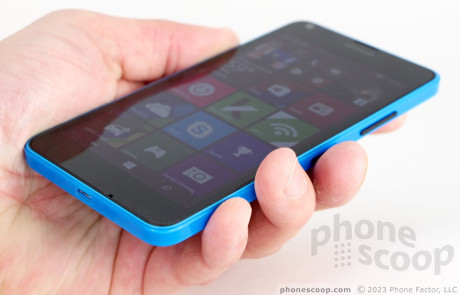
Microsoft packs a lot of power in the potent, pocketable Lumia 640. This Windows Phone handset offers more bang for the buck than most other handsets in Cricket's varied lineup.
Form
Is It Your Type?
The Lumia 640 is a low-cost Windows Phone that represents an incredible value for prepaid customers. The phone covers the basics in spades and comes with juicy extras. If you're a fan of Windows Phone and prefer the prepaid route, look no further than the Lumia 640.
Body
The design language for Nokia's (nee´, Microsoft's) smartphones hasn't changed much since the Lumia 800 showed up way back in 2011. For the most part, you can expect bright, colorful shells made of polycarbonate that are somewhat chunkier than they should be. These attributes describe the Lumia 640 to a "T."
The Lumia 640 has a black glass front and shiny cyan on the side and back surfaces. Where most phones opt for boring blacks and dark grays, the cheery blue is a pleasant change of pace. There's nothing buttoned-down about it. Interestingly, the blue is not uniform. The cyan is more true-blue along the side edges and somewhat lightened up with a small amount of white and green on the back surface. You might not notice this unless you hold the phone close to your eyes in good lighting. Most of the accents on the phone are black. The color combo works well, though I'd prefer if the finish were matte rather than gloss.
The 640 is an average-sized phone by today's standards thanks to the 5-inch screen. It's not dainty in the least. As is often the case with Lumia handsets, the 640 is bit thick. The side edges are squared off; tapering them would have made the phone easier to hold and use. My large hands found the size manageable, but it is treading dangerously close to phablet dimensions. My thumb was able to reach the top of the screen without trouble. The slick surfaces don't do the phone any favors. It's almost as if the polycarbonate is coated in oil, so slippery is this phone. It will glide into most pockets, but the squarer shape of the side edges makes the phone less comfortable when you're walking around.
The materials are glass and plastic. The display is protected by Gorilla Glass 3. The polycarbonate shell is thick and strong. All of the 640's parts are assembled tightly. The overall quality outmatches similarly-priced phones from LG, Samsung, and others.
Many Lumia handsets have more bezel than I care to see, and the 640 indeed falls into that category. The display is surrounded by thick, black borders. Microsoft opted to put the navigation controls on screen rather than use hardware buttons. This takes away from screen real estate since the buttons don't appear / disappear as aggressively as they do within Android OS. You can just barely make out the Microsoft logo above the screen. There's a small slit cut into the glass for the earpiece speaker.
Microsoft hardly varies the button configuration on its handsets. That means the left edge of the phone is smooth, the volume and screen lock buttons are on the right, the headset jack is on top, and the USB port is on the bottom. The side buttons have excellent profiles, making them easy to find and tell apart. They also have excellent travel and feedback.
The phone's camera module and flash are perched near the top of the back surface. Microsoft and Cricket logos are emblazoned on the back in black paint. There's also a small circular hole in the bottom-right corner for the speakerphone. The hole is big enough that a small bug could crawl into it, which makes it a curious design choice.
It's a bit tricky to remove the rear shell since it also wraps around the side edges. You have to pull the back cover off and remove the battery to get at the SIM and memory card slots. Sticking the memory card slot under the battery kind of stinks, if you ask me.
In all, there's not much to complain about. It's a decent-enough piece of hardware that most owners should find the Lumia 640 a pleasure to use.
Performance
Screen
There was a time that 5-inch 720p HD screens were a luxury available only on the priciest flagships. Now you can get one for $130. The Lumia 640's screen is great, especially at this price point. Microsoft's Clear Black LCD panels have always been good, and the 640's screen impressed. It's pixel-rich and everything looks sharp and clean. Colors are accurate and pleasing to the eye. Brightness is quite good, and I had no trouble using the phone indoors or out. Viewing angles are decent, but I've seen better. It's a good screen.
Signal
Cricket operates on AT&T's network around the U.S. That means it enjoys the same coverage and country-wide service. The 640 performed admirably on Cricket / AT&T's network in the greater New York City area. It hopped onto the LTE network whenever and wherever it was available and only dropped to HSPA a handful of times in areas known to have weak coverage. The 640 never lost touch with the network completely and was always able to make and connect calls. The phone didn't drop any calls, nor did it miss any due to signal issues. Data speeds are gimped by Cricket to 8 Mbps, but the 640 consistently matched that speed most of the time I tested it. In other words, it performs as quickly as Cricket allows it to. You won't have trouble checking your social networks, but uploading photos to Instagram sometimes takes a few extra seconds.
Sound
A scalpel and a saw are both cutting instruments. The Lumia 640 is a serious saw in terms of volume, but not quite a scalpel when it comes to call quality. It rips into your ear bluntly rather than slice with finesse. The earpiece produces so much volume I had to hold the phone away from my ear in order to save my poor eardrum. Conversations are certainly loud, but at the cost of clarity. You can improve clarity somewhat by keeping the volume set at 3 or 4 out of 10. The speakerphone, too, produces prodigious amounts of sound. You can hold a conversation via the speakerphone in all but the noisiest environments. People I spoke with via the 640 said I sounded amazing.
Ringers and alerts are quite loud; you won't miss incoming calls or messages for not hearing them. I thought the vibrate alert was decent, but would have prefered a bit more strength.
Battery
The Lumia 640's 2,500 mAh battery supply is more than adequate to provide 1+ days of battery life. On most days, the phone still had a 40% charge left by the time I was ready to call it quits at night. I would still charge it every night, but if you forget, you should still have enough juice left over to get you through the first few hours of your day (or until you can plug the phone in.)
The phone includes Microsoft's usual battery saver tool. You can set the battery saver to engage when the battery reaches 20% or turn it on manually. Once on, the battery saver turns off most background processes and severely limits push notifications to conserve power.
Basics
Menus
The Lumia 640 runs Windows Phone 8.1 with the Lumia Denim update installed. In other words, it has the most up-to-date version of the operating system available. (Microsoft has said the 640 can be upgraded to Windows 10 Mobile later this year.) Windows Phone 8.1 is a robust platform and goes feature-for-feature against Android and iOS.
The Glance screen acts as a screensaver when the display is “off” and lets you see the clock and missed calls/messages. Press the screen lock button to turn the screen fully on for a more in-depth look at your day. The lock screen includes the clock, date, calendar appointments, and notification previews. I've always liked that the lock screen also supports various backgrounds, such as Bing's Photo of the Day, your local weather, health and fitness data, or recent Facebook photos.
Windows Phone uses one infinitely tall home screen for Live Tiles, which act like app icons and widgets at the same time. The Tiles come in small, medium, and large sizes and you can arrange them in any configuration you choose. Many of the Tiles are transparent, which lets you see the wallpaper behind them. You can also store folders — with collections of apps inside — on the home screen. You can add as much to the home screen as you want.
The secondary UI element to Windows Phone is the full list of installed apps. You need only swipe to the left to access them. They are always arranged in an alphabetical list. Windows Phone includes a drop-down notification panel, too, but it isn't quite as feature rich as those on Android and iOS. It provides toggles to the WiFi and Bluetooth radios, airplane mode, the camera, and all your notifications.
The Settings tool is the last piece of the user interface. I strongly suggest you pin the Settings shortcut to the home screen. For the first time, Microsoft has clumped the system controls together in rough categories. (Previously, the Settings menu was a scrambled mess.) Like Android and iOS, the controls for the 640's wireless radios are now all packaged together under a single heading. The categories (networks, personalization, accounts, system, time/language, input/accessibility, privacy, updates, and extras) really help increase the utility of the extensive tools available for customizing how the Lumia 640 behaves.
Microsoft opted for the venerable 1.2 GHz quad-core Snapdragon 400 processor paired with 1GB of RAM. The combination works well with the Lumia 640, which felt fast and zippy across the board.
Calls and Contacts
The phone and people apps have barely changed since the 2011 debut of Windows Phone 7. The phone app is spartan at best. Call history is the default view when you open the app, but there are buttons along the bottom to access voicemail, the dialpad, your contacts, or search. Using the speed dial function, available by swiping to the right, will be a huge time saver. As is the norm for modern smartphones, you can control call rejection behaviors, set automatic message responses, make use of call forwarding, and so on.
The People Hub is your contact list with some social networking tossed in for good measure. The app hooks into Facebook, Twitter, and LinkedIn and will pull recent activity from those sources to create a three-network feed within the contact app. The People Hub is just as powerful and usable as the Android and iOS contact apps. I like the social aspect, which I think Microsoft integrated to a better extent than Android or iOS have.
Messaging
The Lumia 640 requires you to have a Microsoft account, even if it's just a Hotmail/Outlook email account. The native email app in Windows Phone is not as strong as what's available to Android and iOS, but it's still capable. You can use your Gmail or Yahoo email account on the 640 with no problem.
The SMS app has lost utility over the years. It used to cover SMS, Facebook Messenger, and Skype in one app; now it only handles SMS. Like the phone app, it's somewhat spartan, but still manages well enough for basic text, picture, and video messages.
Skype is preinstalled and is one of the juicy extras I mentioned earlier. Microsoft is giving Lumia 640 owners 60 free world Skype minutes to use each month for two years. That means you can spend an hour on the phone via Skype to the most far-flung places on the planet at no extra cost.
Facebook is preinstalled, but Facebook Messenger and Twitter are not. Those apps are available from the Windows Store.
Extra
Media
The Lumia 640 includes several media apps and services. To start, it offers the Microsoft Music and Video apps, which both hook into its XBox entertainment empire. You can sideload your own music and videos, or buy stuff from Microsoft's extensive stores. I've always liked the Windows Phone music app, which does a great job with album cover art and details.
MixRadio is also aboard. MixRadio was created by Nokia, temporarily owned by Microsoft, and later spun off to a company called Line. Just this week MixRadio pushed out a significant update. It's a really good (free) alternative to services like Pandora or Slacker for listening to streamed, curated playlists on the fly.
The 640 tosses in an FM radio for good measure. I found it worked well in my neck of the woods.
Camera
The Lumia Camera app is an amalgamation of Microsoft's old Windows Phone camera app and the dramatically more powerful Nokia camera app. The result is a strong balance between simplicity and flexibility.
First, let me point out that the Lumia 640 doesn't have a dedicated camera button. That stinks. Nearly all Windows Phone handsets have camera buttons.
At least Microsoft opted to put a shortcut to the camera in the notification center. You can wake the phone, swipe down the notification tray, and launch the camera without entering your unlock code. It requires way more steps than I want, but you get used to it after a while. I can't tell you why Microsoft refuses to put app shortcuts (such as camera) right on the Windows Phone lock screen.
The basic camera user interface will make most users feel right at home thanks to its plain arrangement. The settings, still shutter, and video camera are all accessed via buttons placed on the right edge of the screen. Alternately, a long-press of the camera button will force the 640 to capture video instead of a photo. Most other camera apps take burst shots with a long press of the shutter button. There's no burst feature on the 640.
A small strip of options floats at the top of the viewfinder. The default view of this strip lets you switch to the front camera, turn on the flash, or turn on Rich Capture Mode. This mode purports to do a better job of getting accurate exposure, focus, and color. (Why Rich Capture Mode isn't the normal mode is beyond me.) These three tools are simple, though, and let you snap away with ease.
The strip also has a little arrow. Press it, and you gain access to full manual controls. You can manage white balance, exposure, ISO, brightness, and focus all on your own. For knowledgeable users, these tools can lead to incredible creative results.
As with all Windows Phone cameras, the 640 includes several Lenses, which are add-ons for the camera. One of those preinstalled is Lumia Selfie. If you want to snag the best-possible self portrait, this mode gives you the tools to get it done right. It includes a timer and some quick editing tools, such as cropping and mirroring, so you can make adjustments before sharing to social networks.
Gallery
The basic gallery app is fairly solid. It breaks photos down into three major classifications: the camera roll, all albums (including online networks), and favorites. This makes them easy to keep track of. Editing features are rather limited. In fact, the app only lets you crop, rotate, and reduce red eye. More advanced features, such as applying filters or adjusting for exposure/brightness, are conspicuously absent. You can, of course, download the Lumia Creative Studio app from the Windows Store. Creative Studio adds plenty of editing power to the Lumia 640. I can't tell you why it isn't pre-installed; I highly recommend you add it.
The photo app's ability to tap into your online networks is powerful. I strongly suggest you activate automatic uploads to Microsoft's OneDrive cloud storage service. It's simple to setup, and Microsoft is giving Lumia 640 owners 100GB of free storage.
Lastly, the 640 has the Lumia Storyteller app. This will automatically create story albums based on the time and location in which you shoot batches of photos. For example, if you go to Disney World, your Lumia 640 will pull together all the pictures you take on vacay and put them together in an attractive presentation all on its own. You can then choose to upload stories to Microsoft's web site, where they can be shared via web links. Stories can be public or private.
Photos
The Lumia 640 has an 8-megapixel sensor. You'll need to adjust the camera to shoot in the 4:3 aspect ratio to get the full pixel count. The default 16:9 setting crops your photos down to 6 megapixels.
This phone far outshoots its competitors. The images are sharp, properly exposed, and well balanced with respect to color. The vast majority of photos turned out much better than I dared hope they might. I couldn't tell much difference between normal images and those I snapped with the Rich Capture Mode. Many devices that play in the same price point have dramatically lesser cameras. The Lumia 640 is worth choosing over some competitors for this reason alone.
One caveat: the 1-megapixel user-facing camera is practically worthless. Every shot I took was ruined by grain.
Video
The 1080p HD video I captured with the 640 was closer to average. Focus, exposure, and white balance were generally accurate and the results were pleasing enough. I'd switch to dedicated video equipment for real videography needs, but the 640 is more than adequate enough for everyday video needs.
Apps
Several times throughout this review I've said, "I couldn't tell you why feature X is excluded." That's not entirely true. The Lumia 640 has only 8GB of internal storage, of which merely 4.24GB is available to end users. That's precious little space for apps. This is probably why Cricket didn't cram too much of its own bloatware onto the device. Some of the basic Cricket apps include MyCricket and its WiFi hotspot app.
I have to wonder, however, about some Microsoft selections, such as the Redmond company's Sports, Travel, Wallet, Podcasts, Money, and Food & Drink apps. There's not a lot of value in such apps when storage is at such a premium. The included Storage Sense app is suddenly vital when it comes time to manage how much space you have left on your phone. The 640 does support memory cards, and you'd do well to stick the biggest one you can afford in there for your photos and other media.
Bluetooth
The Lumia 640 supports most of the expected Bluetooth profiles, including those that let you connect to headsets and stereo headphones, and share information like files or your phone book. The 640's Bluetooth radio worked as intended and I had no issue with it whatsoever. I was generally pleased with call quality through my car's hands-free system, but music didn't sound all that impressive when pushed through my favorite Bluetooth speaker.
Browser
Internet Explorer is not the best mobile browser on the planet, but it's hardly the worst. It's capable of rendering web sites quickly and accurately. I genuinely like that the address bar and other controls are placed at the bottom of the screen, closer to your thumb. It does have some useful features, like permitting changes to the font size, cookie blocking, and Data Sense to help manage your monthly data usage.
Clock
Glance Screen is really helpful when it comes to checking the time. Glance Screen puts the clock on the display when the screen is off. It acts like a screensaver and floats around. It's perfectly good for checking the time when the 640 is sitting on a desk when indoors, but it's pretty much useless outside. If you need to check the time when outside, tap the screen lock button and the clock is bright, large, and easy to read.
Cortana
Like all WP8.1 handsets, the 640 includes Cortana. Cortana is a voice assistant, similar to Google Now and Siri. You can use Cortana to perform voice searches, dictate messages, and keep track of your flights and/or calendar. Cortana isn't quite as good as Google Now, but it's far better than Siri. The reminders feature is one of the best. For example, you can have Cortana remind you to ask about a friend's health the next time you talk to them. When you call that person, the reminder will pop up. Cortana also parses the Internet for items related to your interests, such as news headlines, sport scores, the local weather, and more.
Cortana controls quiet hours and inner circle. Quiet hours are used to silence notifications during set periods of time, such as at night. The inner circle represents the closest of close contacts, typically family members. You can use Cortana to offer the inner circle access to you even during quiet hours. Last, Cortana can be used to listen to a song and search for it on the internet. I find Cortana isn't as good at this as other third-party apps, though. In sum, Cortana is a great feature worth exploring. It worked perfectly on the 640. What's better, since I signed in using my Microsoft account, it synced my settings from other Windows devices.
GPS
Nokia's HERE Maps is the primary mapping application found on the Lumia 640, and is joined by the separate but related Nokia Drive app for navigating via car. HERE Maps is a great mapping application and matches — if not beats — Google Maps. It's fast, accurate, and lets you store entire countries' maps for offline access. The Nokia Drive app does a perfectly acceptable job of directing you between points. I was pleased with the speed and accuracy of the Lumia 640's GPS radio, which found the phone in quick order.
Microsoft Office
Microsoft's productivity apps have improved by leaps and bounds over the last year — though mostly on competing platforms Android and iOS. The Windows Phone versions of Word, Excel, and PowerPoint are still excellent and more than adequate for managing productivity. One critical extra available to the Lumia 640 is a free year's subscription to Office 365. With this, Lumia 640 owners will be able to create, edit, store, and access their documents from any Windows machine, including the Lumia 640.
Wrap-Up
The Microsoft Lumia 640 is not the cheapest phone available from Cricket Wireless, but it might offer the most bang for the buck.
As is often the case, Microsoft did a bang up job delivering a usable, high-quality piece of hardware that has few detractions. The plastic is a bit slippery and the phone may be heavier than I'd like, but these are modest complaints. The screen is great, call volume is incredible, battery life is respectable, and data performance is as good as it gets in Cricket's stable.
Windows Phone isn't for everyone, but those who prefer it will find plenty to like. Basic apps like the phone and messaging are a bit flat, but they work well. Extras like free Office 365 and OneDrive storage help smooth over some of the phone's shortcomings, such as limited on-board storage.
The camera app was especially impressive, as were the results I achieved with it. Toss in native hooks to Microsoft's Xbox platform and the Lumia 640 has a solid media story to sell.
The Lumia 640 is an excellent entry to Microsoft's growing family of Windows Phone handsets.
Comments
No messages


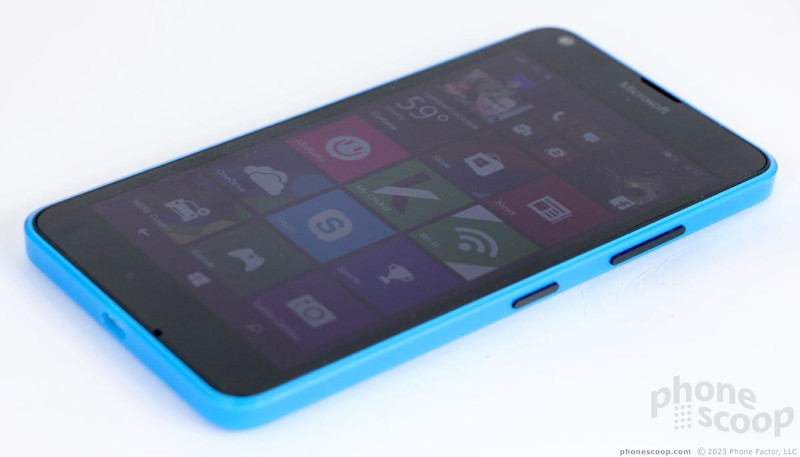

















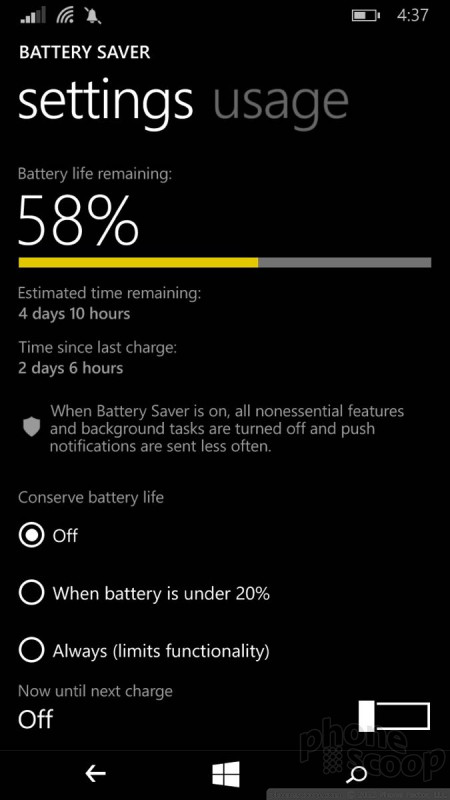


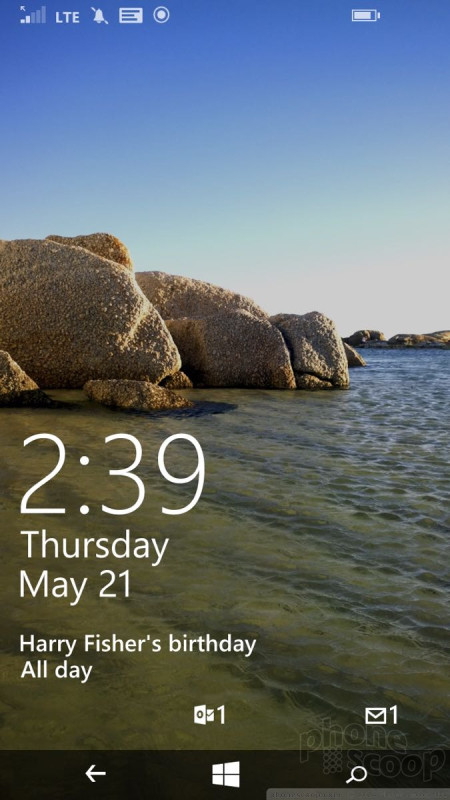







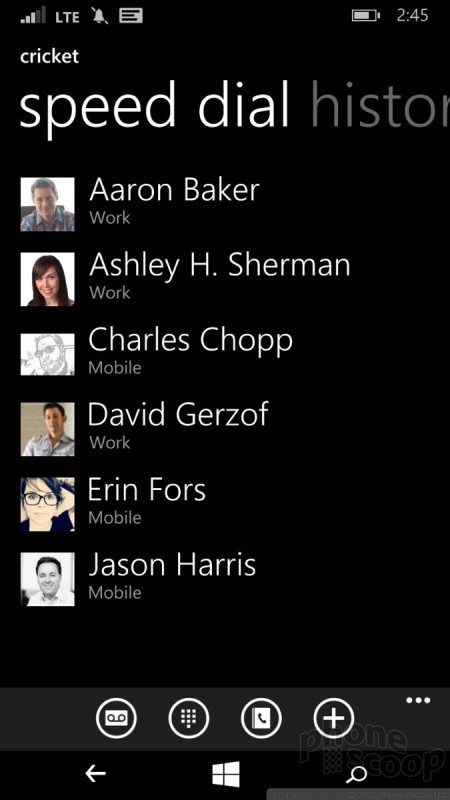



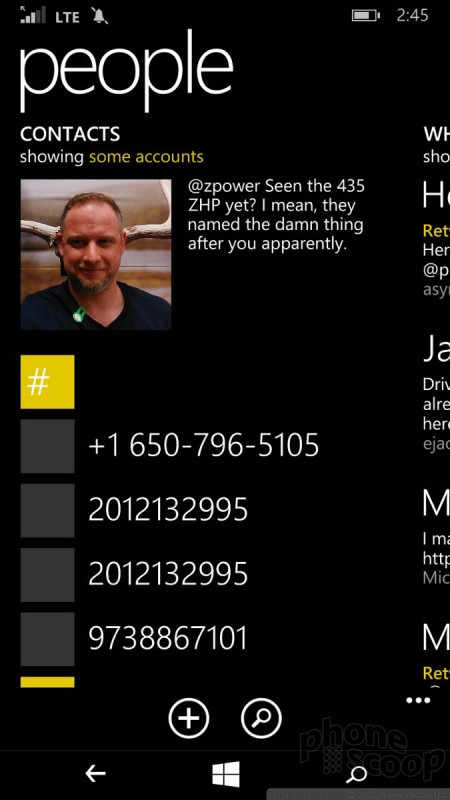




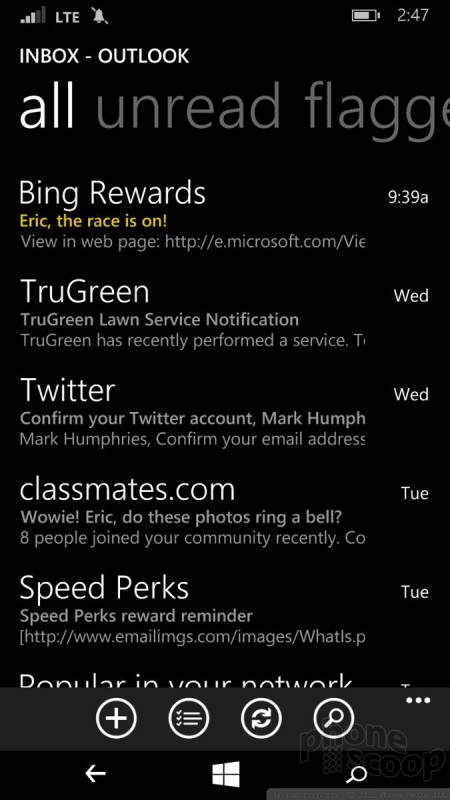












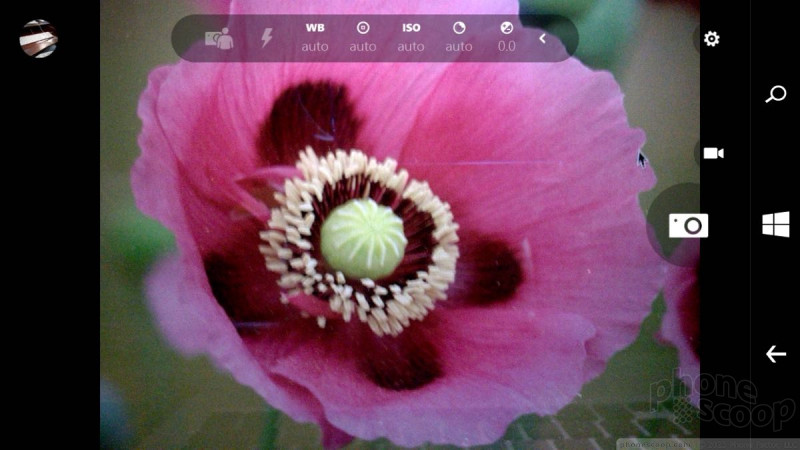






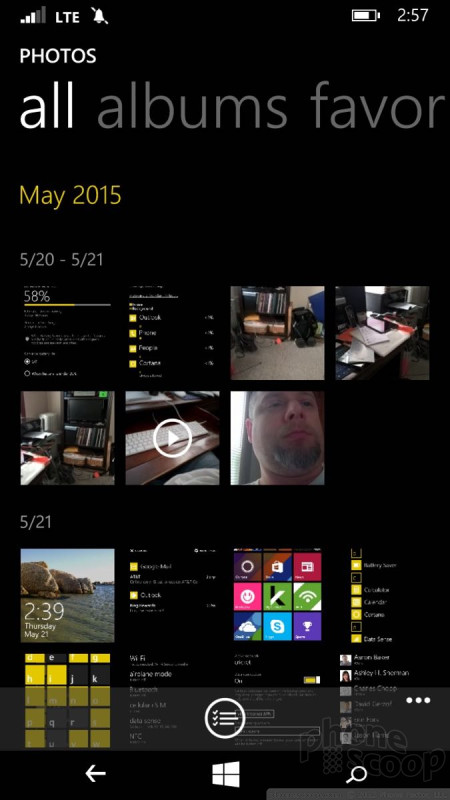






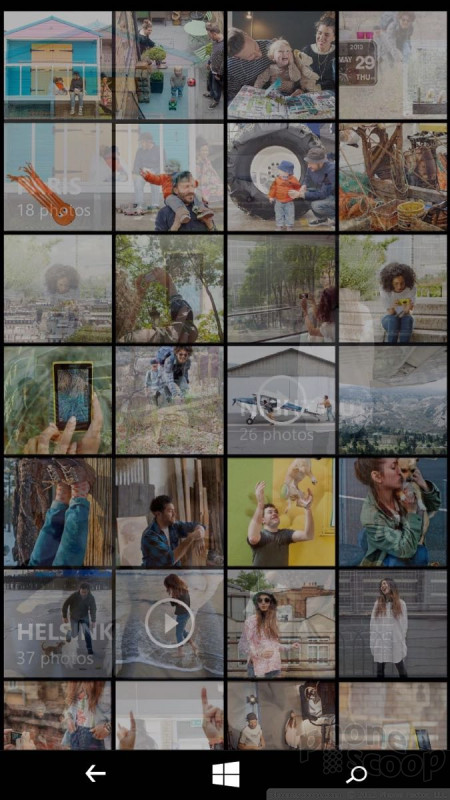





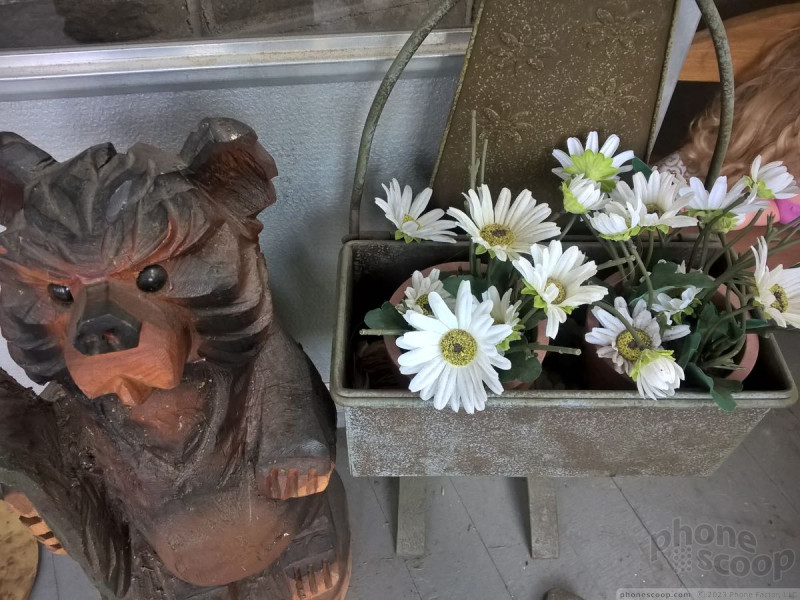











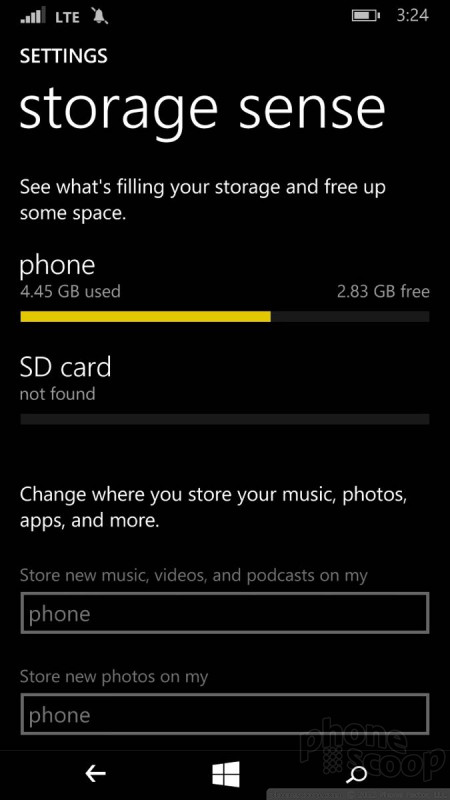























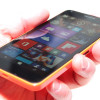 Hands-On: Microsoft Lumia 640 and 640 XL
Hands-On: Microsoft Lumia 640 and 640 XL
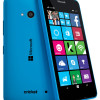 Cricket Prices Lumia 640 at $129
Cricket Prices Lumia 640 at $129
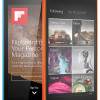 Lumia 640 Landing At T-Mobile In Near Future
Lumia 640 Landing At T-Mobile In Near Future
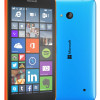 Microsoft Announces the Lumia 640
Microsoft Announces the Lumia 640
 Microsoft Lumia 640
Microsoft Lumia 640





